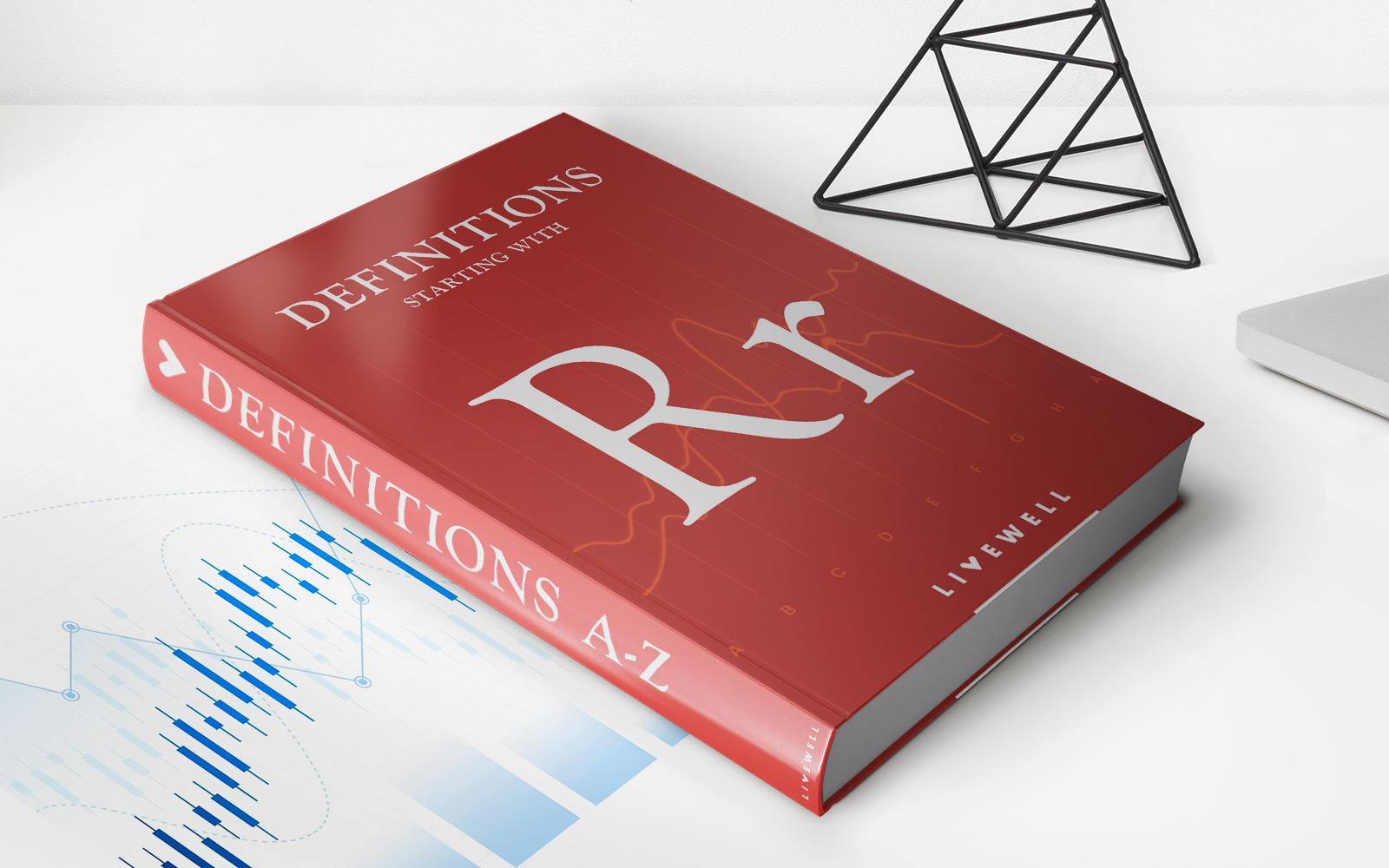Home>Finance>What Are Reasonable Returns For Retirement Planning


Finance
What Are Reasonable Returns For Retirement Planning
Published: January 21, 2024
Discover what are considered reasonable returns for retirement planning and how to achieve them. Gain insights into finance strategies for a secure financial future.
(Many of the links in this article redirect to a specific reviewed product. Your purchase of these products through affiliate links helps to generate commission for LiveWell, at no extra cost. Learn more)
Table of Contents
Introduction
Planning for retirement is an essential aspect of financial management that many individuals often overlook until later in life. However, preparing for retirement early on can ensure a more secure and comfortable future. Central to retirement planning is the concept of reasonable returns, which refers to the expected gains on investments made to fund retirement.
Understanding reasonable returns is crucial as it helps individuals set realistic expectations about their retirement goals and the growth potential of their portfolios. By considering various factors, such as historical average returns, risk tolerance, asset allocation, and time horizon, individuals can make informed decisions about their investment strategies and confidently plan for their future.
In this article, we will delve into the concept of reasonable returns for retirement planning. We will explore the factors that affect these returns and discuss various strategies that individuals can adopt to maximize their investment growth. By the end, you will have a better understanding of how to set realistic expectations for your retirement savings and make informed decisions about your investment approach.
Understanding Retirement Planning
Retirement planning is the process of setting financial goals and making investments to ensure a secure and comfortable post-employment life. It involves estimating the amount of money needed to maintain your desired lifestyle after retirement and creating a strategy to accumulate those funds over time.
One of the key aspects of retirement planning is understanding the concept of reasonable returns. Reasonable returns refer to the expected rate of growth on your investments, which play a vital role in achieving your retirement goals. While every individual’s financial situation is unique, there are several common factors that can influence the level of reasonable returns for retirement planning.
The first factor to consider is your risk tolerance. Risk tolerance refers to your ability and willingness to withstand fluctuations in the value of your investments. Generally, higher risk investments have the potential for greater returns, but also come with a higher possibility of losses. Understanding your risk tolerance is important in determining where to allocate your investments and the level of expected returns.
Another crucial factor is asset allocation. Asset allocation involves diversifying your investments across different asset classes, such as stocks, bonds, real estate, and cash. The goal of asset allocation is to balance risk and return by spreading investments across various types of assets that have different levels of risk and potential return.
Furthermore, the time horizon until your retirement is significant in determining reasonable returns. The longer your time horizon, the more potential there is for compounding growth on your investments, and the higher the reasonable returns you can expect. It is essential to start retirement planning early to take advantage of the power of compounding and allow your investments to grow over time.
Inflation is another critical factor to keep in mind when discussing reasonable returns. Inflation erodes the purchasing power of your money over time, meaning that the same amount of money will buy less in the future. Therefore, the returns on your investments need to outpace inflation to ensure that your retirement income retains its value.
Understanding these factors is crucial for setting realistic expectations for your retirement savings. By aligning your investment strategy with your risk tolerance, diversifying your portfolio, considering your time horizon, and accounting for inflation, you can maximize your chances of achieving your retirement goals and securing a comfortable future.
Factors Affecting Reasonable Returns
When it comes to determining reasonable returns for retirement planning, there are several factors that can significantly impact the growth potential of your investments. Understanding these factors is essential for setting realistic expectations and making informed decisions about your retirement savings. Let’s explore some of the key factors that affect reasonable returns:
- Market Conditions: The overall economic and market conditions can have a significant impact on investment returns. During periods of economic growth and favorable market conditions, returns on investments tend to be higher. Conversely, during economic downturns or market volatility, returns may be lower. It is important to consider the current market environment when setting expectations for your retirement investments.
- Asset Allocation: The distribution of your investments across different asset classes, known as asset allocation, can influence the level of reasonable returns. Different asset classes have varying levels of risk and return potential. By diversifying your portfolio across stocks, bonds, real estate, and cash, you can balance risk and increase the potential for reasonable returns.
- Risk Tolerance: Your risk tolerance, or your willingness and ability to withstand market fluctuations, plays a crucial role in determining reasonable returns. Generally, higher-risk investments have the potential for higher returns, but they also come with a greater possibility of losses. Assessing your risk tolerance can help you determine the level of risk and the corresponding return potential that aligns with your comfort level.
- Investment Expenses: The expenses associated with your investments, such as management fees or fund expenses, can eat into your returns. It is important to consider these costs and choose investment options with manageable expenses, as they can impact the overall growth of your retirement savings.
- Time Horizon: The length of time until your retirement plays a significant role in determining reasonable returns. A longer time horizon allows for potential compounding growth on your investments, which can lead to higher returns. Starting early and giving your investments time to grow can greatly enhance the growth potential of your retirement savings.
- Inflation: Inflation erodes the purchasing power of your money over time. When considering reasonable returns, it is important to account for inflation and aim for returns that exceed the rate of inflation. By doing so, you can ensure that your retirement income maintains its value and supports your desired lifestyle.
Understanding these factors and their impact on reasonable returns is crucial for effective retirement planning. By considering market conditions, optimizing asset allocation, assessing risk tolerance, managing investment expenses, accounting for time horizon, and addressing inflation, you can set realistic expectations and make informed decisions to maximize the growth potential of your retirement savings.
Historical Average Returns
When planning for retirement and determining reasonable returns, it is helpful to consider historical average returns on various investment options. Historical data provides insights into how different asset classes have performed over time, helping individuals set realistic expectations for their retirement investments.
It is important to note that historical returns are not indicative of future performance, as markets are subject to fluctuations and past trends may not necessarily continue. However, studying historical averages can provide valuable information about the long-term growth potential of different investments.
Stocks, for example, have historically demonstrated higher average returns compared to other asset classes, such as bonds or cash. Over the long term, stocks have shown an average annual return of around 7-10%. However, it is important to remember that stock returns can be volatile in the short term, with significant fluctuations due to market conditions and economic factors.
Bonds, on the other hand, tend to offer lower average returns compared to stocks but come with less volatility. Historically, bonds have provided average annual returns of about 4-6%. Bonds are often considered as a more stable investment option, particularly government bonds as they are backed by the government’s guarantee. However, it’s important to note that the returns on bonds can be influenced by factors such as interest rates and credit quality.
Cash investments, such as savings accounts or certificates of deposit (CDs), typically offer lower average returns compared to stocks and bonds. Historically, cash holdings have provided average annual returns of around 1-2%. Cash investments are generally considered low risk but may not generate significant growth over the long term due to the impact of inflation.
Real estate is another investment option to consider when looking at historical returns. Real estate investments have shown varied performance across different regions and time periods. Historically, real estate has provided average annual returns ranging from 5-8%. However, it is essential to conduct thorough research and consider factors such as location, market trends, and property type when investing in real estate.
It is important to diversify your investment portfolio and consider a mix of different asset classes to maximize potential returns while managing risk. By combining stocks, bonds, cash, and potentially real estate or other alternative investments, you can create a well-rounded portfolio that leverages the potential growth of different assets.
Remember, historical average returns should be used as a reference point for setting expectations, but it is crucial to consult with a financial advisor or investment professional to customize your portfolio based on your specific financial goals, risk tolerance, and time horizon.
Setting Realistic Expectations
When it comes to retirement planning, setting realistic expectations for your investment returns is crucial. It helps you avoid disappointment and allows for more accurate financial projections. Here are some key considerations for setting realistic expectations:
- Align with Historical Averages: Look at historical average returns for various asset classes. While past performance is not a guarantee of future results, it can provide a benchmark for understanding potential returns. Keep in mind that different investments have different risk levels, and higher returns often come with higher risk.
- Consider Your Risk Tolerance: Understand your willingness and ability to tolerate risk. Different individuals have different risk appetite levels, so it’s essential to assess your comfort level. Investing too conservatively may limit your growth potential, while investing too aggressively may expose you to unnecessary risk. Find a balance that aligns with your risk tolerance and financial goals.
- Factor in Inflation: Inflation erodes the purchasing power of your money over time. When setting expectations, consider that your investment returns should ideally exceed the rate of inflation to maintain your standard of living. Focus on investments that have historically outpaced inflation or seek guidance from a financial professional to create an inflation-adjusted plan.
- Account for Time Horizon: Your time horizon until retirement plays a significant role in setting expectations. Generally, a longer time horizon allows for more potential growth as investments have more time to compound. Starting early in your retirement planning journey gives your investments a better chance to weather market fluctuations and potentially achieve higher returns.
- Plan for Withdrawals: Consider the amount of money you will need to withdraw during retirement and how that may impact your overall portfolio. Taking into account your desired lifestyle and potential healthcare costs, ensure that your investment returns are sufficient to support your planned withdrawals without depleting your savings too quickly.
- Seek Professional Advice: Consult with a financial advisor or investment professional to gain insights and guidance on setting realistic expectations. They can help you analyze your financial situation, assess your risk tolerance, and create a customized retirement plan tailored to your specific goals and circumstances.
Remember, setting realistic expectations is crucial for effective retirement planning. By considering historical averages, understanding your risk tolerance, factoring in inflation and time horizon, planning for withdrawals, and seeking professional advice, you can develop a retirement savings strategy that aligns with your goals and provides a higher likelihood of achieving them.
Balancing Risk and Returns
When it comes to retirement planning, striking the right balance between risk and returns is essential. Balancing risk and returns refers to finding an investment strategy that maximizes potential growth while managing the level of risk you are willing to take. Here are some key considerations for achieving this balance:
- Assess Your Risk Tolerance: Understand your comfort level with taking on investment risk. Different individuals have different risk tolerances, and what may be acceptable for one person may not be suitable for another. Assess your financial goals, time horizon, and ability to withstand market fluctuations to determine the level of risk you are willing to take.
- Diversify Your Portfolio: Diversification is a fundamental strategy in balancing risk and returns. By spreading your investments across different asset classes, such as stocks, bonds, and cash, you can reduce your exposure to any single investment’s risk. Diversification helps cushion the impact of market volatility and can potentially improve your overall risk-adjusted returns.
- Consider Your Time Horizon: Your investment time horizon is a crucial factor in balancing risk and returns. If you have a longer time horizon until retirement, you may have a higher capacity to take on more risk in pursuit of higher returns. However, as you approach retirement, it is generally advisable to gradually shift to a more conservative investment approach to protect your accumulated wealth.
- Understand Different Asset Classes: Gain a clear understanding of the risk and return characteristics of different asset classes. Stocks, for example, tend to have higher potential returns but also come with higher volatility. Bonds, on the other hand, provide a more stable income stream but have lower growth potential. By diversifying your portfolio across various asset classes, you can balance the risk and returns across different investments.
- Rebalance Regularly: Regularly review and rebalance your portfolio to ensure it remains aligned with your risk tolerance and investment goals. As certain investments outperform or underperform others, it can lead to an imbalance in your portfolio. Rebalancing involves selling investments that have performed well and buying assets that have underperformed, bringing your portfolio back to the desired asset allocation.
- Seek Professional Guidance: Consider consulting with a financial advisor or investment professional who specializes in retirement planning. They can help you navigate the complexities of balancing risk and returns, provide insights into market conditions, and offer personalized investment advice tailored to your unique circumstances.
Striking the right balance between risk and returns is crucial for long-term success in retirement planning. By assessing your risk tolerance, diversifying your portfolio, considering your time horizon, understanding different asset classes, regularly rebalancing, and seeking professional guidance, you can create an investment strategy that maximizes potential returns while managing risk within your comfort level.
Diversification and Asset Allocation
Diversification and asset allocation are two key strategies that play a vital role in retirement planning. They help individuals balance risk and optimize potential returns by spreading their investments across different asset classes. Let’s explore these strategies in more detail:
Diversification: Diversification involves spreading your investments across different asset classes, industries, geographic regions, and investment types. The goal is to reduce the risk associated with any single investment and enhance the potential for consistent returns. By diversifying your portfolio, you can potentially mitigate the impact of market volatility and reduce the possibility of significant losses.
For example, if your portfolio is solely invested in one company’s stock and that company experiences financial difficulties, your entire investment could be at risk. However, by diversifying across different stocks, bonds, real estate, and other investment vehicles, you can limit the impact of an individual investment’s poor performance on your overall portfolio.
Asset Allocation: Asset allocation refers to the distribution of your investments across different asset classes, such as stocks, bonds, cash, and potentially alternative investments. It involves determining the ideal combination of asset classes based on your financial goals, risk tolerance, and investment timeline.
The purpose of asset allocation is to balance risk and reward. Historically, different asset classes have demonstrated varying levels of risk and return potential. Stocks, for instance, have the potential for higher returns but also come with higher volatility. Bonds, on the other hand, provide a more stable income stream with lower growth potential. By diversifying your portfolio across various asset classes, you can potentially capture upside potential while reducing overall risk.
It is important to note that asset allocation should be reviewed regularly and adjusted based on changing market conditions, your risk tolerance, and financial goals. As you approach retirement, you may consider shifting towards a more conservative allocation, reducing exposure to higher-risk assets in favor of more stable investments that preserve capital.
The Benefits of Diversification and Asset Allocation:
- Diversification reduces the risk associated with any single investment, protecting your portfolio from severe losses.
- Asset allocation allows you to balance risk and returns based on your risk tolerance and investment goals.
- Both strategies can potentially improve your risk-adjusted returns over the long run.
- They provide the flexibility to adapt your investment approach as market conditions and personal circumstances change.
- Diversification and asset allocation help manage the impact of market volatility, allowing you to stay invested for the long term.
Implementing a well-diversified portfolio with an appropriate asset allocation can enhance the growth potential of your retirement savings while managing risk. It is recommended to consult with a financial advisor or investment professional who can help you create a customized diversification and asset allocation strategy that aligns with your unique financial goals and risk tolerance.
Importance of Time Horizon
The time horizon, or the length of time until your retirement, is a critical factor in retirement planning. It significantly influences the investment decisions and potential returns you can expect. Understanding the importance of time horizon can help you make informed choices and maximize the growth of your retirement savings. Let’s explore why time horizon matters:
Compound Growth: The longer your time horizon, the more opportunity there is for your investments to benefit from the power of compounding. Compounding refers to when your investment earnings generate additional earnings over time. As your investments grow, your returns can generate their own returns, accelerating the growth of your portfolio. Starting early and giving your investments more time to compound can result in substantial growth over the course of your retirement planning journey.
Risk and Volatility: Time horizon plays a role in managing investment risk and volatility. In the short term, investments may experience fluctuations and volatility due to market conditions. However, as the time horizon lengthens, there is more potential to ride out short-term market fluctuations and benefit from long-term market trends. A longer time horizon allows you to take a more long-term perspective, potentially reducing the impact of market downturns on your overall returns.
Flexibility in Investment Choices: The time horizon influences the investment options available to you. A longer time horizon allows for a higher tolerance for risk and potential for higher returns. With a longer investment horizon, you may be more comfortable incorporating higher-risk assets, such as stocks and real estate, into your portfolio. Conversely, as you approach retirement with a shorter time horizon, you may opt for more conservative investments to preserve capital and reduce the potential for significant losses.
Retirement Income Planning: Your time horizon affects how you plan for generating retirement income. The longer your time horizon, the more flexibility you have in balancing growth-oriented investments with income-generating assets. As you near retirement, your investment focus may shift towards preserving capital and generating a sustainable income stream to support your post-employment lifestyle.
Regular Monitoring and Adjustments: Your time horizon is not static; it evolves as you progress through different life stages. It is important to regularly review and adjust your investment strategy based on changes in your time horizon. As retirement approaches, you may need to transition your portfolio to a more conservative allocation to protect what you have accumulated and ensure a steady income stream.
Understanding the importance of time horizon allows you to make strategic investment decisions that align with your unique goals and circumstances. Starting early, leveraging the power of compounding, managing market risk, and adjusting your portfolio as you approach retirement can help you optimize the growth of your retirement savings and achieve your financial objectives.
Consideration of Inflation
When it comes to retirement planning, considering the impact of inflation is crucial for setting realistic expectations and ensuring your savings can sustain your lifestyle over time. Inflation refers to the gradual increase in prices of goods and services over time, which reduces the purchasing power of money. As such, it is important to account for inflation when projecting your retirement needs and setting your investment goals. Here are key reasons why the consideration of inflation is crucial:
Eroding Purchasing Power: Inflation erodes the value of money over time. This means that a certain amount of money today will have reduced purchasing power in the future. For example, if the inflation rate is 3% per year, items that cost $100 today would cost approximately $103 in one year. As a result, it is important to ensure that your investments generate returns that outpace the rate of inflation to maintain the purchasing power of your retirement savings.
Long-Term Impact: Inflation has a compounding effect over time, especially during the long-term nature of retirement. Even low inflation rates can accumulate and significantly impact your purchasing power during retirement, which can span several decades. By the time you retire, the cost of goods and services may have increased substantially compared to present-day prices. It is essential to account for this in your investment strategy to ensure your savings can keep up with rising expenses over time.
Choosing Inflation-Adjusted Investments: To mitigate the negative effects of inflation, consider investing in assets that have the potential to deliver returns that exceed the inflation rate. Certain investments, such as stocks or real estate, have historically outpaced inflation over the long term. Inflation-protected securities, like Treasury Inflation-Protected Securities (TIPS), are specifically designed to safeguard against inflation. By incorporating these types of investments into your portfolio, you can help protect the real value of your savings and maintain your purchasing power during retirement.
Regular Portfolio Review: Inflation is not constant, and it can fluctuate over time. Regularly reviewing your investment portfolio and adjusting it to suit changing inflation expectations is essential. This may involve rebalancing your asset allocation, considering different investment options, and consulting with financial professionals to ensure your investment strategy remains aligned with long-term inflation goals.
Considering Rising Healthcare Costs: Inflation can have a notable impact on healthcare costs, which often rise at a faster rate compared to general inflation. As healthcare expenses tend to be a significant portion of retirement costs, it is crucial to account for inflation when planning for healthcare expenses during retirement. Incorporating health savings accounts or long-term care insurance into your retirement plan can help mitigate the financial impact of rising healthcare expenses.
Considering the impact of inflation is vital for effective retirement planning. By accounting for inflation’s erosion of purchasing power, understanding its long-term impact, choosing inflation-adjusted investments, regularly reviewing your portfolio, and factoring in rising healthcare costs, you can better protect the value of your retirement savings and maintain your standard of living throughout your retirement years.
Seeking Professional Guidance
When it comes to retirement planning and making decisions about reasonable returns, seeking professional guidance can provide valuable insights and expertise. Financial advisors and investment professionals specialize in helping individuals navigate the complex world of finance and create customized retirement plans. Here’s why seeking professional guidance is essential:
Expertise and Knowledge: Financial professionals have the knowledge and experience to guide you through the intricacies of retirement planning. They are well-versed in the various investment options, understand market conditions, and can analyze your financial situation to develop a plan tailored to your specific needs and goals.
Objective Advice: A professional advisor can provide objective advice based on your unique circumstances. They can review your risk tolerance, time horizon, and financial goals to recommend appropriate investment strategies. Their unbiased perspective can help you make informed decisions and avoid emotional biases that may impact your investment choices.
Customized Retirement Plans: Financial advisors can help you create a customized retirement plan that aligns with your specific goals and risk tolerance. They consider various factors such as your desired retirement lifestyle, income needs, tax implications, and estate planning. By tailoring a plan to your individual circumstances, they can help you maximize your chances of achieving your retirement objectives.
Monitoring and Adjustments: Financial advisors provide ongoing monitoring and support. They regularly review your investment portfolio, assess its performance, and make adjustments as needed. Monitoring your investments ensures they remain aligned with your long-term goals and adapts as market conditions or your personal circumstances change.
Access to Investment Opportunities: Professional advisors often have access to a wide range of investment opportunities and products. They can provide you with a diverse selection of investment options that align with your goals. They have access to in-depth research, due diligence, and investment platforms that may not be readily available to individual investors.
Staying Informed: Financial advisors stay up-to-date with the latest trends, market insights, and financial regulations. They can provide you with information on new investment opportunities, changes in tax laws, or other developments that may impact your retirement plan. Their expertise and industry knowledge help ensure you are well-informed and can make informed decisions.
Peace of Mind: Seeking professional guidance gives you peace of mind that you have a dedicated expert in your corner. Knowing that you have a qualified professional overseeing your retirement plan can alleviate stress and provide reassurance that you are on the right track toward achieving your financial goals.
When seeking professional guidance, it is important to choose a reputable financial advisor or investment professional. Look for professionals with the appropriate certifications, experience, and a fiduciary duty to act in your best interest. By collaborating with a knowledgeable advisor, you can benefit from their expertise and have confidence in your retirement plan.
Conclusion
Retirement planning is a crucial aspect of financial management, and understanding reasonable returns plays a significant role in this process. By setting realistic expectations for your investment growth, you can effectively plan and work towards a secure and comfortable retirement. Consideration of various factors, such as historical average returns, risk tolerance, asset allocation, time horizon, inflation, and seeking professional guidance, is key to achieving your retirement goals.
Historical average returns provide valuable insights into the performance of different asset classes over time. They serve as a reference point for setting expectations, understanding the potential growth of your investments, and choosing suitable investment options.
Additionally, balancing risk and returns is crucial in retirement planning. Diversifying your portfolio and allocating your assets across different investment classes help reduce risk while optimizing potential returns. Understanding your risk tolerance and making adjustments as your time horizon evolves are essential in maintaining the right balance.
Consideration of inflation is vital to ensuring your retirement savings maintain their purchasing power. Accounting for the impact of inflation allows you to set realistic expectations, choose inflation-adjusted investments, and plan for rising costs, especially in areas like healthcare.
Seeking professional guidance from financial advisors or investment professionals can provide valuable expertise and insights tailored to your specific needs. They can help you create a customized retirement plan, monitor your investments, and provide objective advice to enhance your decision-making process.
In conclusion, retirement planning is a long-term journey that requires careful consideration and informed decision-making. By understanding reasonable returns, managing risk, accounting for inflation, and seeking professional guidance, you can navigate the complexities of retirement planning and work towards a secure and financially fulfilling future.














